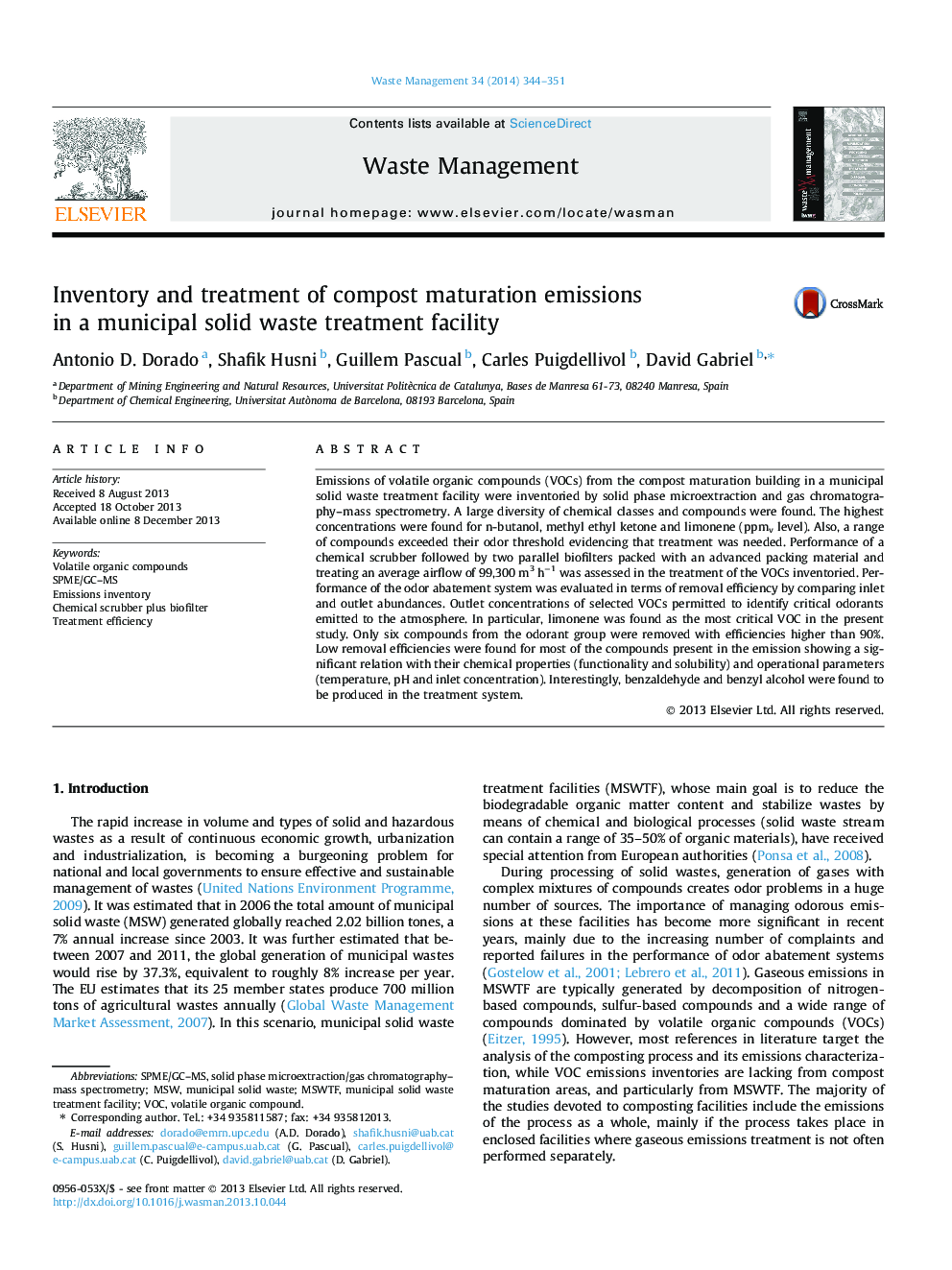| Article ID | Journal | Published Year | Pages | File Type |
|---|---|---|---|---|
| 6355169 | Waste Management | 2014 | 8 Pages |
Abstract
Emissions of volatile organic compounds (VOCs) from the compost maturation building in a municipal solid waste treatment facility were inventoried by solid phase microextraction and gas chromatography-mass spectrometry. A large diversity of chemical classes and compounds were found. The highest concentrations were found for n-butanol, methyl ethyl ketone and limonene (ppmv level). Also, a range of compounds exceeded their odor threshold evidencing that treatment was needed. Performance of a chemical scrubber followed by two parallel biofilters packed with an advanced packing material and treating an average airflow of 99,300Â m3Â hâ1 was assessed in the treatment of the VOCs inventoried. Performance of the odor abatement system was evaluated in terms of removal efficiency by comparing inlet and outlet abundances. Outlet concentrations of selected VOCs permitted to identify critical odorants emitted to the atmosphere. In particular, limonene was found as the most critical VOC in the present study. Only six compounds from the odorant group were removed with efficiencies higher than 90%. Low removal efficiencies were found for most of the compounds present in the emission showing a significant relation with their chemical properties (functionality and solubility) and operational parameters (temperature, pH and inlet concentration). Interestingly, benzaldehyde and benzyl alcohol were found to be produced in the treatment system.
Keywords
Related Topics
Physical Sciences and Engineering
Earth and Planetary Sciences
Geotechnical Engineering and Engineering Geology
Authors
Antonio D. Dorado, Shafik Husni, Guillem Pascual, Carles Puigdellivol, David Gabriel,
